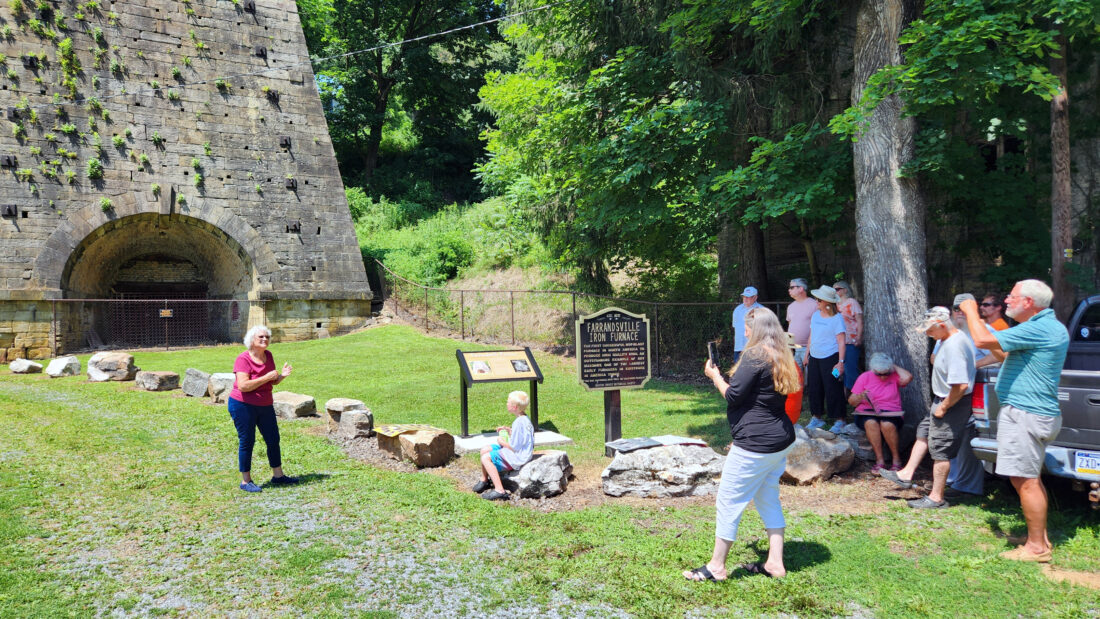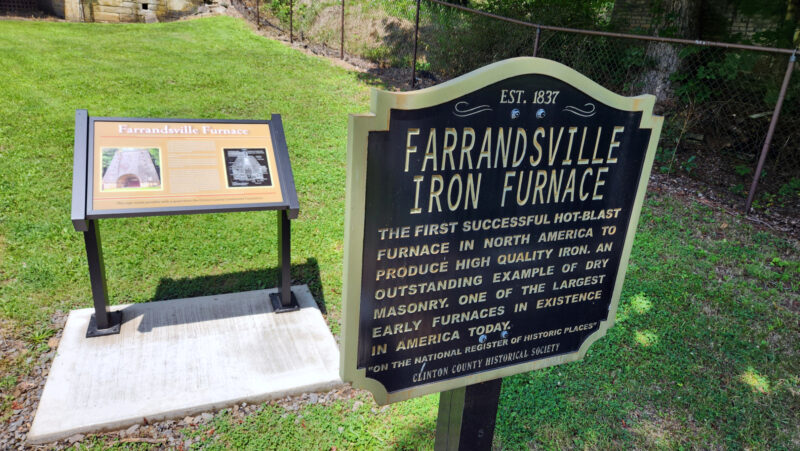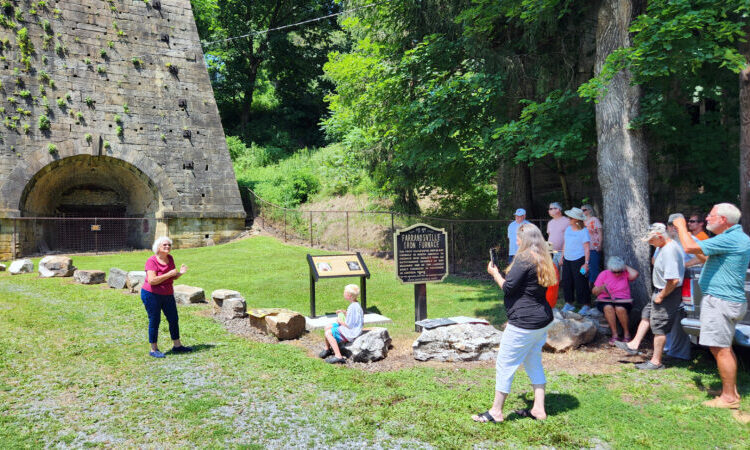
PHOTO PROVIDED
Bonnie Hannis, left, president of the Clinton County Historical Society, tells history buffs and society supporters about the history of the Farrandsville Iron Furnace, located behind her. In front of her are two signs, including the newest interpretive sign closest to the furnace. That sign, paid for by a grant from the Clinton County Community Foundation, was unveiled at recent ceremonies.

PHOTO PROVIDED
Signage at the historic Farrandsville Iron Furnace is complete – for now – after the Clinton County Historical Society unveiled the smaller sign. The sign was made possible by a grant from the Clinton County Community Foundation.
FARRANDSVILLE — The Clinton County Historical Society has unveiled a new informational sign at the historic Farrandsville Iron Furnace, which dates back to 1837.
The new sign in front of the furnace, located in the village of Farrandsville along the West Branch of the Susquehanna River northwest of Lock Haven, explains how the furnace came to being and how it worked to produce iron, helping to drive the industrial revolution.
The furnace was the first successful one in North America to produce high quality iron, and remains one of the largest early furnaces in existence. Iron was an essential material for America’s industrial revolution because it was used to make tools, machines and buildings. The process involved heating iron ore in a furnace until it liquified, and then pouring it into molds to cool and solidify.
The newly installed interpretive sign — funded with a $1,900 grant from the Clinton County Community Foundation in 2022 — tells how a group of capitalists from Boston, Mass., formed the Farrandsvlle Iron Co. to create the new hot-blast process of iron production in Clinton County. In 1836, Edward Thomas from Wales was the engineer; John Salmon from Scotland was the master mason and Benjamin Perry from England was the iron master.
It was in the spring of 1837 when James Ralston from Scotland installed the pipes and machinery and production began, said Bonnie Hannis, Historical Society board president.
The structure also was the first to use anthracite coal to heat iron ore to produce iron, she said.
The new sign includes a schematic of the furnaces’ design.
Hannis revealed that the original engineer’s great-great-great-great-great-grandson recently donated letters his family kept about the furnace to the historical society.
And, she said, the furnace has a connection to the Fallon Hotel builders, as agents for that famous building in downtown Lock Haven advocated for the furnace.
The furnace, she noted, will be 250 years old come 2026. She thanked the Foundation for its support of the project.
That milestone, she said, is why the Historical Society is soliciting donations to erect a roof over the furnace to save the structure from water and deterioration. The furnace is built of dry masonry. Dirt has gotten in between the blocks, allowing vegetation to grow outward. The current rubber roof has been decimated by age and weather.
Jim Berkebile, a society board member, said the nonprofit has bids for the roof, “now we just need to raise the money.”
One estimate reflects a cost of around $18,000.
The furnace is on the Pennsylvania Most Endangered Historical Sites list, Hannis noted. Besides a roof, other improvements to the site are needed, she added. To learn more about the historical society, visit www.clintonpahistory.org, or call 570.748.7254 or visit the historical Heisey Museum — circa 1833 and home of the historical society — at 362 E. Water St., in Lock Haven.
To learn more about how to honor a loved one and/or support a cause you care about, visit the Clinton County Community Foundation online at www.clintoncountyfoundation.org, call 570.220.1038, or email cccf@clintoncountyfoundation.org.
















